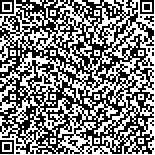| 摘要: |
| 于1993年5–12月在厦门大学海滨实验场,以人工培养的翡翠贻贝幼体作为实验材料,在人工海水中添加3–15 mmol/L K+或通过离子替代减少40–48.5 mmol/L Mg2+而设计成一系列检测介质,在作用72–120h后分别观察幼体在检测介质中附着和变态反应结果们时采用药理学检测法就翡翠贻贝幼体附着和变态的离子控制机制进行探讨。结果表明:在人工海水中增加6–12 mmol/L K+或减少16.0–33.5 mmol/L Mg2+可有效诱导幼体的附着和变态,添加12 mmol/L K+可诱导幼体48.0%附着率和50.0%变态率,而减少23 mmol/L Mg2+可诱导41.6%附着率和52.1%变态率。细胞膜K+通道阻滞剂TEA,可以阻抑增加K+或减少Mg2+对幼体附着和变态的诱导作用,而阴离子交换阻滞剂SITS,却无阻抑作用:说明幼体一些可兴奋细胞在附着和变态过程中起重要作用。此外,在自然海水中添加9 mmol/L K+和12 mmol/L K+可分别诱导幼体较高的附着率(43.1%)和变态率(57.0%);这一实验结果可应用于翡翠贻贝人工育菌技术的改进。 |
| 关键词: 翡翠贻贝 幼体 附着 变态 离子控制 |
| DOI: |
| 分类号: |
| 基金项目:国家自然科学基金资助项目,39400021号;国家教委博士点基金资助项目,9238401号 |
|
| IONIC CONTROL OF ATTACHMENT AND METAMORPHOSIS IN THE GREEN MUSSEL PERNA VIRIDIS (LINNAEUS) LARVAE |
|
KE Cai-huan,LI Shao-jing,LI Fu-xue,ZHENG Zhong
|
|
Department of Oceanography, Institute of Subtropical Oceanography, Xiamen University, Xamen, 361005
|
| Abstract: |
| From May to December 1993, an artificially cultivated green mussel, Perna viridis (Linnaeus) larvae, were used as experimental material to study the effects of changes in ionic concentrations of environmental media on larval attachment and metamorphosis, and to discuss the mechanisms of ionic control on these two events using methods of phannacology. This study was undertaken in a seashore experimental field of Xiamen University.
The settling and metamorphic responses of the larvae were observed after 72-120h of cultivation in a series of detecting media, namely, artificial seawater designed by adding 3-15 mmol/L K+ or decreasing 4.0-48.5 mmol/L Mg2+ through ionic substitution. The results were as follow. Attachment and metamorphosis of the larvae were effectively induced by increasing 6-12 mmol/L K+ or decreasing 16.0-33.5 mmol/L Mg2+ in the artificial seawater. The addition of 6-12 mmol/L K+ induced 48% attachment and 50% metamorphosis; these were reduced by 41.6% and 52.1% in response to a decrease of 23 mmol/L in Mg2+. At 24h, 48h, 72h and l20h intervals, the attachment and metamorphic rates of the larvae were examined for a joint action of cell membrane K+-channel blocker TEA (tetraethhylammonitnn chloride) (5×10-5 mol/L) and the addition of 9 mmol/L K+, or for a combination of anion exchange blocker SITS (4-acetamido-4-isothiocyanostilbene-2,2-disulfonate) (1×10-5 mol/L), TEA (5×10-5 mol/L) and a 23 mmol/L Mg2+ decrease in the artificial seawater. The results show that the action of increasing K+ or decreasing Mg2+ in inducing. Those two events is inhibited by the K+-channel blocker TEA, whilst the anion exchange blocker SITS has no inhibition, indicating that some K+-channels in the cell membrane play an important role on excitable cells sensitive to TEA in the process of attachment and metamorphosis. In addition, a higher attachment rate (43.1%) was achieved as a result of a supplement of 9 mmol/L K+ or 12 mmol/L K+, suggesting that the experimental methods can be applied to improving the technology of the artificial seed breeding of this species.
The inductive effect of the addition of K+ on Perna viridis larvae, which resulted in 48% attachment and 50% metamorphosis in this experiment, was much greater than on Saccastrea commercialis larvae, and K+ had no induction on attachment and metamorphosis of Medulis larvae. However, such an effect was significantly lower for Perna viridis larvae than in marine gastropod larvae studied previously elsewhere. Based on these results, compared to marine gastropod larvae, settling and metamorphic responses of marine bivalve larvae have a low sensitivity to the addition of K+. |
| Key words: Perna viridis, Larva, Attachment, Metamorphosis, Ionic control |
